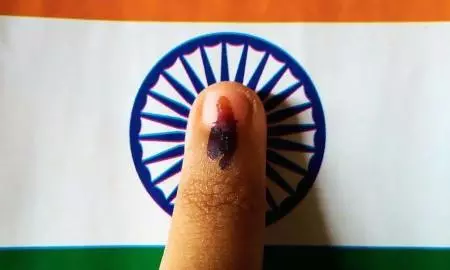
One Nation, One Election report: Here are the key highlights
Kovind-led panel spells out how a single electoral roll should be prepared, and when a state assembly gets dissolved, among others

The Ram Nath Kovind headed panel on ‘One Nation, One Election’ submitted its report to President Droupadi Murmu in New Delhi on March 14, 2024.
Arguing in favour of holding simultaneous elections, the report said asynchronous elections cause uncertainty and instability, thwarting supply chains, business investments and economic growth and government machinery gets disrupted causing hardship to citizens.
Frequent use of government officials and security forces adversely affect discharge of their duties, frequent imposition of the Model Code of Conduct (MCC) causes policy paralysis and slows down the pace of the developmental programmes. While staggered elections induce ‘voters’ fatigue’ and present a significant challenge in ensuring their participation.
Here are some of the highlights of the HLC's recommendations:
Simultaneous elections
The committee recommends as a first step to hold simultaneous elections to Lok Sabha and all the state legislative assemblies. The Constitution should be amended to enable simultaneous elections in two steps, said the report. But, for the first step, no ratification by the states will be required for the constitutional amendment.
In a second step, elections to municipalities and the panchayats will be synchronised with elections to Lok Sabha and state Assemblies in such a way that local body elections are held within 100 days of the elections to Lok Sabha and state Assemblies. This will require ratification by not less than one-half of the states.
Currently, all these elections are held independently of one another, following timelines dictated by the terms of every individual elected body.
Simultaneous elections were by and large in vogue until the fourth general elections of 1967. However, as successive central governments used constitutional provisions to dismiss state governments before the end of their term, and as coalition governments in the states and the Centre kept collapsing, a country came to see elections at different times through the year.
Preparation of a single electoral roll and election ID
The Consitution has to be amended for the purpose of preparation of single electoral roll and electoral photo identity cards for use in elections to all the three tiers of government.
The Election Commission of India can then prepare a single electoral roll and election ID in consultation with the state ECs. These amendments will require ratification by not less than one-half of the states.
If state assembly gets dissolved
If a state assembly has to be dissolved prematurely due to the incumbent government losing a no-confidence motion or any other reason and fresh elections have to be held for that assembly, the fresh term of the assembly will not be 5 years but till the expiration of the term of the Lok Sabha. Conversely, if mid-term polls are to be held for Lok Sabha due to some reason, the new House constituted post mid-term polls will only be for the remaining tenure of the immediately preceding session, the report recommended.
Logistics challenge
The HLC has recommended the EC will plan and estimate in advance, in consultation with the state ECs, and take steps for the deployment of manpower, polling personnel, security forces, EVMs/VVPATs, etc., so that free and fair simultaneous elections are held in all the three tiers of the government.

